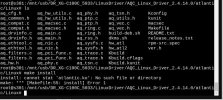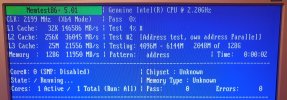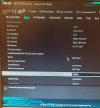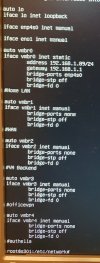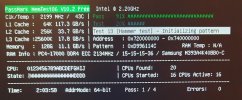Hello there,
I got myself a new server. Installing proxmox 7.3.-3 went fine. After reboot, I encountered some issues getting the network to work, but after 1-2 additional reboots, all seemed fine. I installed configured cephfs, mounted disks from other servers in the LAN using sshfs and started data migration.
A few days later, I had to move the server to a new place (same LAN), and could not get the network to work again afterwards. I discovered, that all 6 LED's of the networkports stop blinking simultaniously, the moment linux starts booting. "dmesg -w" does not report any changes when I plugged in or removed the network cables.
Maybe a hardware conflict?
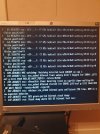
Could you please advise on how to proceed?
Here is my hardware:
I got myself a new server. Installing proxmox 7.3.-3 went fine. After reboot, I encountered some issues getting the network to work, but after 1-2 additional reboots, all seemed fine. I installed configured cephfs, mounted disks from other servers in the LAN using sshfs and started data migration.
A few days later, I had to move the server to a new place (same LAN), and could not get the network to work again afterwards. I discovered, that all 6 LED's of the networkports stop blinking simultaniously, the moment linux starts booting. "dmesg -w" does not report any changes when I plugged in or removed the network cables.
Maybe a hardware conflict?
- I removed the additional network card (Asus) => No changes.
- Then I removed the graphic card (Nvidia GeForce 7300 LE), and replaced it through another one. The boot-process is different, and I get the following screen:

Could you please advise on how to proceed?
Here is my hardware:
- Fractal Design Node 804
- PSU: 600W semi- modular
- Mainboard: ASUS X99-M WS\SE
- Intel CPU 2650 es v3
- GIGABYTE Aorus NVMe 1TB
- RAM: 128 GB DDR4 ECCr 2133MHz Mhz (4 x 32 GB)
- Graphic-card: Nvidia GeForce 7300 LE (replaced later by an old Nvidia quadro)
- Asus network card: XG-C100C
- 2x 10TB HDD from WD
Last edited:


